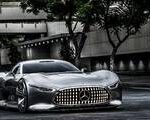For decades, diesel Mercedes-Benz vehicles were synonymous with longevity, robustness, and unwavering reliability. Models like the 240D, 300D, and 300SD, while not speed demons, were celebrated for their simple, over-engineered design that ensured they would consistently reach any destination. However, this reputation has unfortunately faded, and some of the last diesel Mercedes-Benz cars sold in the American market are now notorious for being costly to maintain, largely due to the problematic OM642 diesel engine. As experts in Mercedes-Benz repair at mercedesxentry.store, we aim to provide you with a detailed overview of the vulnerabilities of this engine in our “Achilles Heels” series.
While engine criticism might seem commonplace, we at mercedesxentry.store approach reliability concerns with a balanced perspective. We understand that certain components, like timing chains, are considered wear items, and issues with predictable failure patterns can be proactively managed through scheduled maintenance. Many manageable flaws can be incorporated into routine servicing. As enthusiasts who work with and drive older European vehicles daily, we’re not strangers to risk. However, the Mercedes-Benz OM642 diesel V6 stands out as an engine we would strongly advise our customers to avoid.
So, what exactly is the OM642, and which Mercedes-Benz models are equipped with it? Introduced in the mid-2000s, Mercedes-Benz sought to replace its aging inline-six and inline-five diesel engines with a modern turbocharged diesel V6. The result was the OM642, an undersquare (long stroke) 72-degree all-aluminum unit featuring a variable geometry turbocharger. This engine found its way into a wide range of models, including the 2007 and later E320 CDI and E350 BlueTec sedans, the 2007 and later R320 CDI, R350 BluTec, ML320 CDI, ML350 BluTec, and the 2008 and later GL320 CDI and GL350 BlueTec SUVs. It was also used in the 2012 to 2013 S350 BlueTec sedans, the 2007 to 2008 Jeep Grand Cherokee diesels, the rarer GLE350d and GLS350d SUVs, and a significant number of Sprinter vans.
Due to its widespread application, vehicles with the Mercedes-Benz OM642 diesel engine are readily available on the used car market. However, they are also frequently encountered occupying service bays in repair shops. Let’s delve into the common issues we’ve observed with this engine at mercedesxentry.store.
Turbo Actuator Failures
A prevalent problem with the OM642 turbodiesel is the failure of the turbocharger’s variable geometry mechanism. Often, the variable geometry flaps within the turbocharger become stuck in a “no boost” position, rendering the turbocharger ineffective. If this lack of boost is traced to a malfunctioning externally-mounted vane actuator, Mercedes-Benz typically recommends a complete turbocharger replacement, an expensive solution costing several thousand dollars as the components are sold as a single assembly.
While aftermarket turbo actuators are available, marketed as a straightforward fix, our experience at mercedesxentry.store indicates they often suffer from poor manufacturing quality, fitment problems, and limited durability. However, assuming the turbocharger itself is in good condition, a full unit replacement isn’t the only viable option.
Fortunately, a specialized industry has emerged, focusing on refurbishing these actuators. These services can restore an OM642 to operation for a more reasonable cost. While we have seen some success with these rebuilt actuators, it’s important to note that other potential issues can still sideline an OM642 engine.
Swirl Flap Problems
Like many modern diesel engines, the Mercedes-Benz OM642 utilizes swirl flaps in its intake manifold runners. These flaps are designed to generate air turbulence at lower engine speeds, theoretically enhancing the mixing of the direct-injected fuel with the incoming air in each cylinder. According to engine component specialists like MS Motorservice, swirl flaps in diesel engines are intended to improve fuel-air mixture at low speeds, reducing fuel consumption and emissions by creating a swirl effect. At higher engine speeds, they open to maximize cylinder filling.
However, these swirl flaps are prone to carbon buildup from the exhaust gas recirculation (EGR) system. This carbon accumulation causes them to become sticky and eventually seize, often damaging delicate components of the swirl flap mechanism, such as the connecting rods. Since these flaps are not individually serviceable, replacing at least one complete intake manifold is a common repair. In many cases, simultaneous replacement of both intake manifolds (as each cylinder bank has its own manifold) is necessary.
Expect to pay around $700 for just one intake manifold, plus approximately 6 hours of labor for a single bank replacement. For those not comfortable with DIY repairs or lacking the time, intake manifold replacement can easily result in a repair bill exceeding four figures at a professional repair shop.
Oil Cooler Leaks in the Engine Valley
Another common issue in the same area as the problematic swirl flaps is pressurized oil leaks caused by the failure of inferior oil cooler gaskets. The location of these gaskets? Deep within the engine valley. While this might be less problematic in other engine designs, Mercedes-Benz has tightly packed components around the OM642’s valley, including the intake manifolds and the turbocharger.
This problem is so widespread that Mercedes-Benz issued a technical service bulletin (TSB) in 2016 addressing the oil cooler gasket leaks. While the replacement parts themselves are relatively inexpensive, the labor required to access and replace the oil cooler seals is substantial, estimated at 12.3 hours of book time. This repair is labor-intensive, potentially spanning multiple days for a DIY mechanic. At standard European specialist shop labor rates, outsourcing this repair can become a significant expense.
For those considering tackling this repair themselves, online forums like Peach Parts offer detailed guides and discussions, such as a comprehensive thread documenting the journey into the OM642 oil cooler leak repair. These resources clearly illustrate why even experienced mechanics might prefer to delegate this repair to a professional.
NOx Sensor Failures
Moving to the underside of the vehicle, the OM642 engine’s NOx sensors are another frequent point of failure. At mercedesxentry.store, we regularly encounter NOx sensor replacements in our service quotes for OM642-equipped vehicles. The cost for parts is typically between $450 and $500 per sensor, and replacement is crucial as soon as a sensor fails. A malfunctioning NOx sensor can trigger Mercedes-Benz’s notorious 10-start countdown, an emissions safeguard that limits the driver to only ten more engine starts before immobilization.
And “immobilized” is precisely what it means. Once the countdown reaches zero, the vehicle will require a tow to a dealership to rectify the issue. Furthermore, NOx sensors are critical emissions components responsible for monitoring harmful nitrogen oxide levels, and diesel engines already face scrutiny regarding their environmental impact.
Main Bearing Wear
Similar to certain high-performance BMW engines, early Mercedes-Benz OM642 engines can also experience main bearing wear. In 2013, Mercedes-Benz issued a technical service bulletin addressing a ticking noise originating from the engine at idle and low speeds.
The recommended solution, according to Mercedes-Benz, is “Replacement of bearing shells of 1st crankshaft main bearing.” While this repair can be performed with the engine still in the vehicle, neglecting this ticking noise can lead to premature engine failure.
Looking at used engine marketplaces like car-part.com, a good used replacement OM642 engine ranges from $6,500 to $8,500, excluding installation costs. Given that many Mercedes-Benz models equipped with the OM642 have depreciated to similar values, catastrophic engine damage can render these diesel vehicles economically unrepairable.
If you are considering a V6 diesel Mercedes-Benz, we at mercedesxentry.store strongly advise opting for a naturally-aspirated gasoline-powered V6 or V8 model from the 2009 model year or newer. This alternative can save you considerable future headaches. The potential fuel savings offered by the diesel engine can easily be negated by the costs of engine repairs, potentially exceeding the fuel expenses of a V8 model. While the OM642 is undeniably smooth, torquey, and efficient when functioning correctly, unless you are committed to significantly supporting your mechanic’s financial well-being, we recommend exploring other diesel vehicle options if you are set on owning a diesel. For example, the E70 BMW X5 35d presents a more reliable alternative to an ML350 BlueTec. Although models like the Porsche Cayenne Diesel, Audi Q7 TDI, and Volkswagen Touareg V6 TDI also have their own sets of issues, our experience at mercedesxentry.store indicates that we see far fewer of these models combined requiring unscheduled repairs compared to the Mercedes-Benz diesel ML models alone.
(Photo credits: Mercedes-Benz, Jeep, Mhobsonjr – Own work, CC BY-SA 4.0, eBay, Amazon, Peach Parts, Sprinter Forum, Benzworld, Mercedes Benz Owners)

